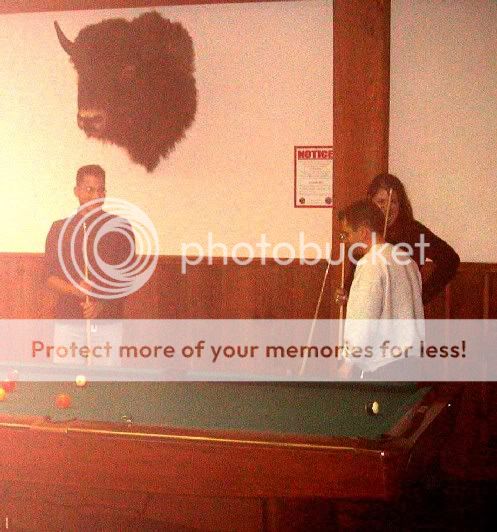Buffalo At Fermilab
Physics is our mission, but buffalo may be Fermilab's main attraction for visitors. What are buffalo doing at a physics laboratory? (The oft-told tale that they are Fermilab's equivalent to the canary in the mineshaft, living Geiger counters to warn of radioactivity, is strictly fiction. The Fermilab site does not present a radiation hazard, and Fermilab buffalo do not glow in the dark.) Our buffalo herd carries on a tradition begun by Robert Wilson, the Laboratory's first director, to recognize and strengthen Fermilab's connection to our prairie heritage. Wilson brought the first American bison, a bull and four cows, to Fermilab in 1969; and in 1971 the Illinois Department of Conservation gave us 21 more. Today's herd are descendants of those first animals.
The term "buffalo" is commonly but somewhat inexactly applied to the North American bison (Bison bison), a hoofed, short-horned, hump-shouldered member of the cattle family that can reach a height of more than five feet and a weight of 2,500 pounds, give or take--and can run at a speed of 30 miles an hour, usually when in an ill humor. For a little additional hide-splitting, the Fermilab bison are plains bison, distinguishing them from woods bison found farther north in Canada. Woods bison tend toward slightly smaller heads and humps than plains bison, though they can be equally disagreeable.
But accurate or not, buffalo is the name they'll go by. "Buffalo" lends itself to symbol, which is the role of the Fermilab herd: a symbol of the frontier, in this case the frontier of high-energy physics, and a link to the origin of the Lab's site as land of the great midwestern prairie. "Buffalo" speaks of a time of big sky, of thundering herds huge enough to shake the earth beyond the horizon, of Plains Indians and their ponies on the hunt, and of sharpshooting Buffalo Bill. ("Bison Bill?" Don't think so.)
Wild buffalo once numbered in the tens of millions; the familiar events of their near-extinction left their number under a thousand. Public and private breeding programs have restored the current total to roughly 160,000 in the United States. The Fermilab herd has about 45; our pasture can support up to 70. When the herd gets too big, the Laboratory holds a buffalo auction. Besides grazing, Fermilab's buffalo eat grain and hay baled on the Laboratory site. Gestation takes nine months, and most calves are born in the spring. Regular veterinary care keeps the herd in good health. Although they look placid, buffalo have the undomesticated personality of the wild. Like physicists, they have been described as "cantankerous" by those who have tried to herd them. A double fence around the Fermilab pasture protects the buffalo and the public from each other. Advice from an experienced hand: "Don't turn your back on a buffalo."























